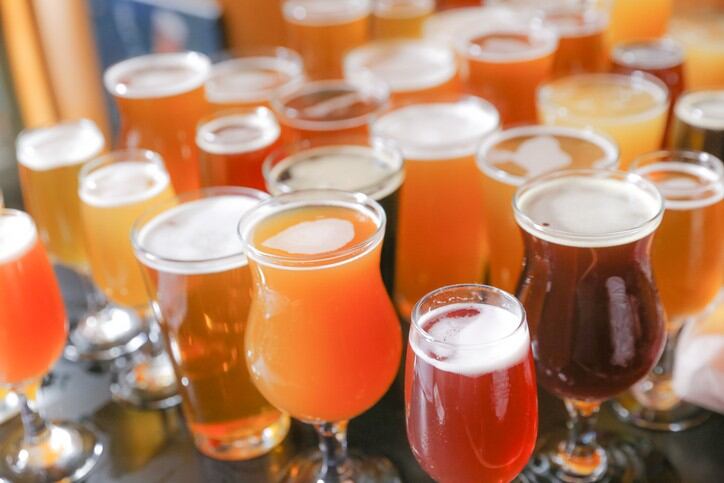The beer culture in US is deeply rooted in country’s framework, historically enjoyed by pilgrims and president alike. From Prohibition to the craft renaissance, beer enthusiasts have transformed the global market dominance over the years, ending the consolidation era that resulted in the domination of a few global conglomerates and the homogenization of beer.
Craft Beer & Flavor Revolution
In the wake of decades of success from “macro” giants over the evolutionary cycle, a new attitude in beverages was also brewing. All of those companies eventually sprang to own small breweries of their own, of the distinctly “micro” variety. However, “microbrews” or “microbreweries” simply weren’t enticing to the new-age consumer, primarily because all they implied was size. It was obvious that people would have looked beyond “size” in determining their expectations of quality. Herein, where macro-brews once reigned supreme, homebrewing hobby began to thrive and “craft beer” came into existence.
The popular image of beer in America had long been that of a mass-produced commodity with no culture, tradition, or character. The microbrewing pioneers struggled to establish a foundation of vision and passion, serving a taste of full-flavored beer and old world European traditions, with a uniquely American character. There was a notable improvisation in the quality of beer, empowering a wider distribution and establishing choice and popularity.
Impact on Economy
Craft brewers were quite successful in establishing high levels of consistency, quality and innovation, expanding the minds of the beer enthusiasts and creating the most diverse brewing culture in the world. While, in 2008, craft breweries shared only 4% of overall beer sales in the US, there were still tremendous benefits for craft brewers and beer drinkers. The number of brewery organizations grew by a factor of 6 in between 2008-2016, and the number of brewery workers grew by a whopping 120%.
Yes, quite unbelievably, the centuries old beer industry has sextupled its launches and the increased its workforce by twice in less than a decade.
The credit for these new establishments and new jobs goes undeniably to the craft beer revolution. Beer fans have embraced the Cambrian explosion of modest breweries that have bloomed across the country. Nearly two-thirds of Americans live within a 10-mile radius of a brewery. These microbreweries, brewpubs and regional craft brewers are encouraged by loyal fans who wanted to taste beer that is fresh from the source in addition to specialty imports.
The glorious history of the ‘better beer’, beer marketplace, beer economics and the beer enthusiasm is the reflection of how the rest of the world has reacted, adjusted and embrace the evolving pace of beer revolution.
Need for a larger perspective
The proficient homebrewing, craft brewing, and beer enthusiast community continues to be on the explicit cutting-edge of the beer’s creative destiny. Most of the craft brewers feel that their brewery is far beyond just being a drink—it’s a comprehensive communal lifestyle, a creative expression of brewery.
Using the BA definition of “small, independent and traditional”, both the consumers and the brewers could have a vague distinction between who was “craft” and part of the fold, and who was “not craft”. It wasn’t perfect, but it was largely consistent.
Now, the time of “craft” as a useful descriptor seems to fade away with changing demographics of beer market driven by the brewery mergers and acquisitions.
The newly introduced term that replaces “craft” in the long run is “independent craft brewer”. On July 27, 2017 the BA launched a new seal, designating beers made by independent brewers. It features an iconic shaped of flipped beer bottle, rendering the spirit with which craft brewers have upended beer. Additionally, it gives the consumer an important information about a brewery’s independent ownership.
As the classic beer enthusiasts in America are fond of saying – there may have never been a better time to drink beer. However, we seem to have entered a new “post-craft” era, where these labels no longer hold much significance, where breweries have the liberty to make decisions about their ownership solely based on what’s profitable for business. The independent brewers can decide on whether to stay committed to set decisions, or get flexible in approaching the market.
Beside the positioning of carrying independent breweries’ beers, craft adoptions usually involve an extensive variety of highly curated ingredients, which result in more complex flavors in each pour. Additionally, having higher alcohol content than their domestic counterparts, independent craft breweries are fan favorite among recreational beer-enthusiasts.

